 LIMITED SPOTS
All plans are 30% OFF for the first month! with the code WELCOME303
LIMITED SPOTS
All plans are 30% OFF for the first month! with the code WELCOME303

 LIMITED SPOTS
All plans are 30% OFF for the first month! with the code WELCOME303
LIMITED SPOTS
All plans are 30% OFF for the first month! with the code WELCOME303


Growth should seem like going quicker, but for many businesses, it feels more like being stopped in traffic. When you gain additional clients, projects, and personnel, the systems that used to work start to slow things down. Email chains make it hard to talk to each other, documents are spread out over different technologies, and approvals take longer than ever. Teams don't celebrate growth; they get caught in inefficiencies.
The best project management tools stop this from happening by putting communication, workflows, and reporting all in one place. When businesses employ unified platforms, they may expand without losing the rhythm that helped them succeed. One of these platforms is Lark. It helps companies that are growing quickly by making things clearer instead of more convoluted.
Lark Base: Structuring growth without friction
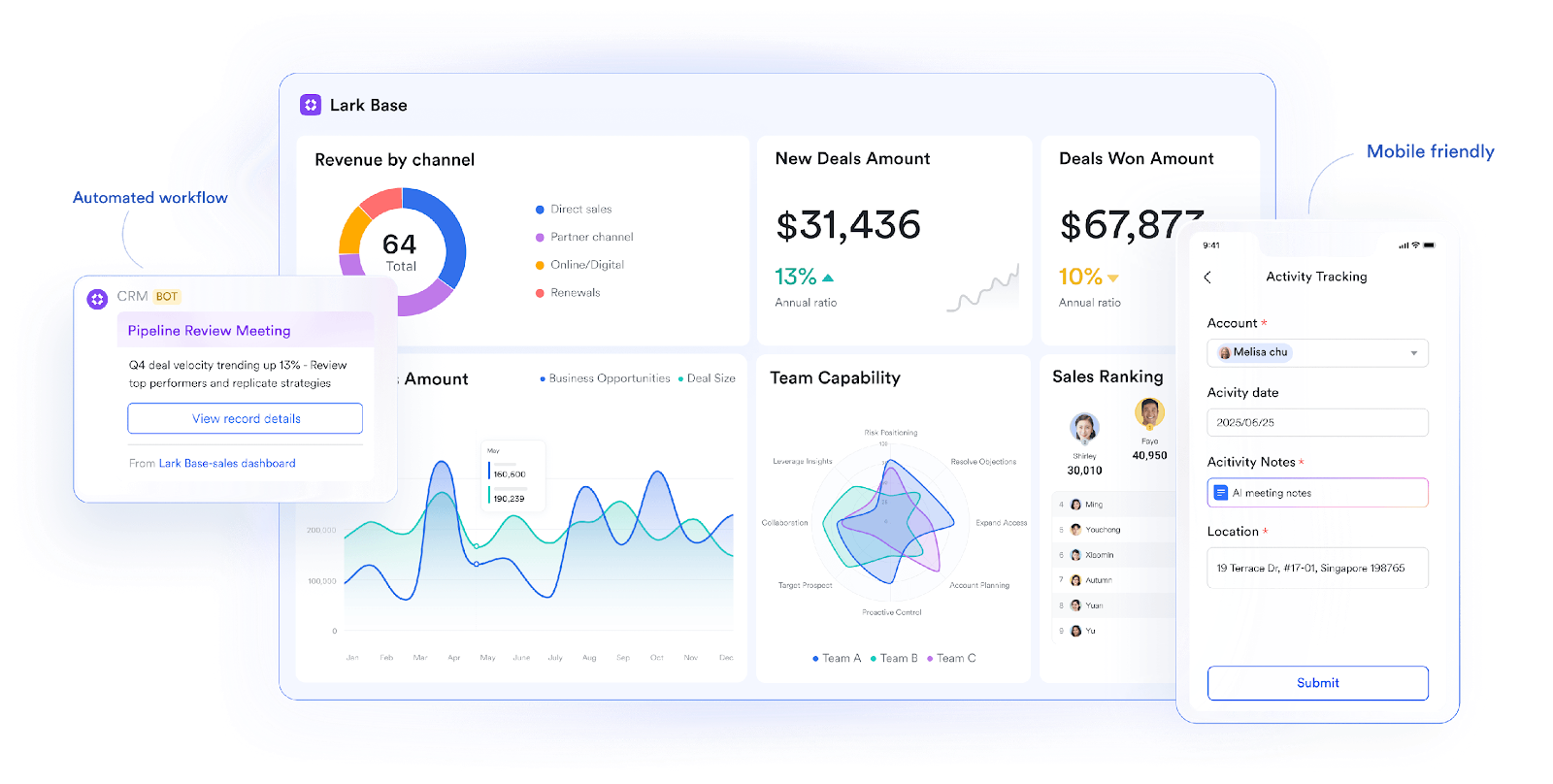
Lark Base
Data that is scattered out is one of the major problems that might slow down growth. It's challenging for teams to work together when they use spreadsheets, emails, and other technologies that aren't connected. Lark Base solves this challenge by giving businesses a shared system of record that changes as they develop.
Sales teams can manage pipelines, keep track of customer interactions, and keep an eye on possibilities with Base, which is much like a CRM app. Finance and operations also benefit because all of the data on spending and the supply chain is in the same system. This makes it easy to evaluate how things are going and cuts down on blind spots.
Dashboards provide growth data right away, and linked records connect projects and approvals that are related. There are several views, such as kanban for campaign progress, Gantt for rollout dates, and grid for budgeting, that let departments work in the way that works best for them without compromising alignment. Base makes sure that things don't go out of hand while a business is growing quickly.
Lark Messenger: Keeping collaboration sharp at scale
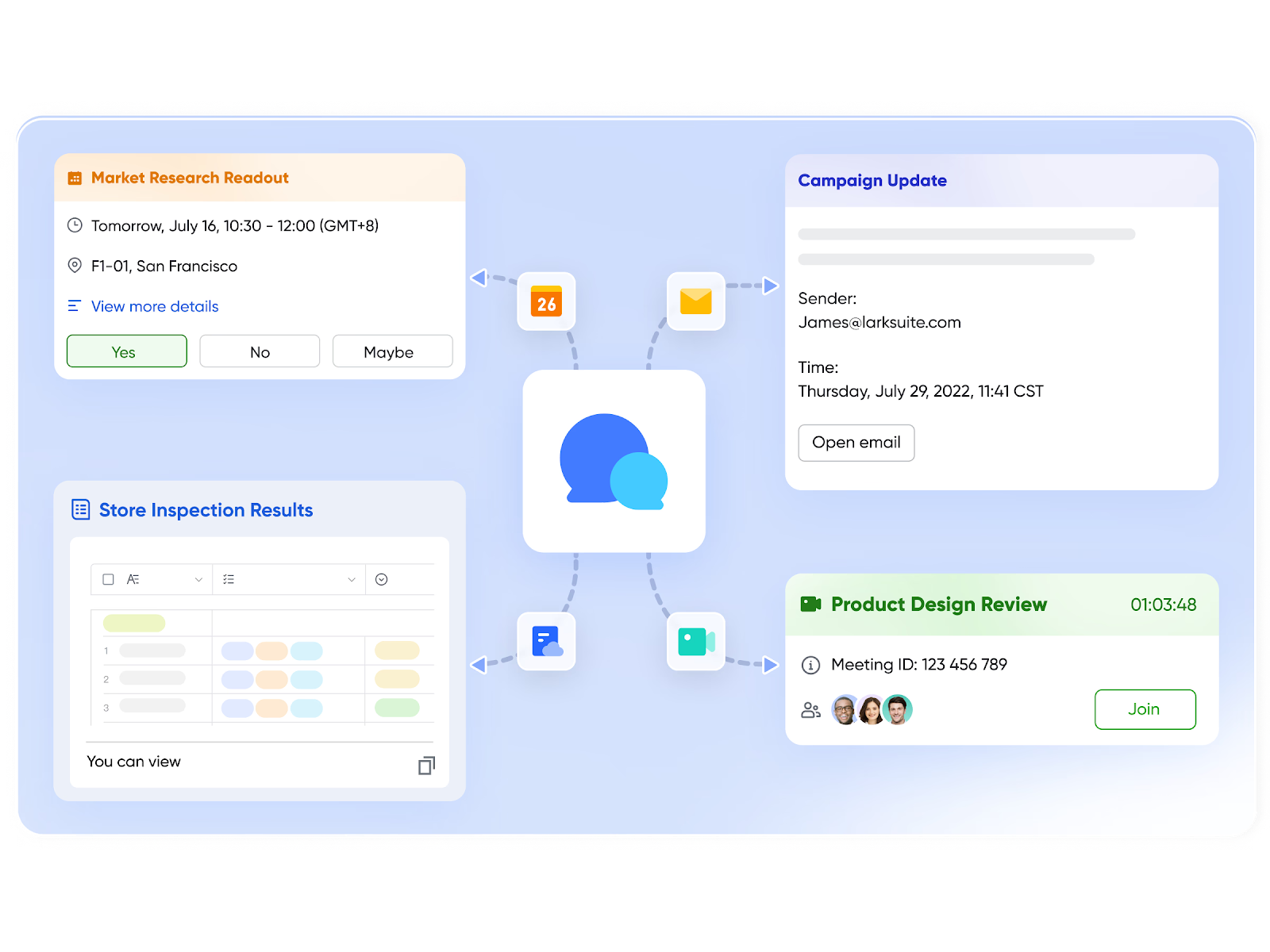
Lark Messenger
When a company grows, it doesn't simply mean more labor; it also means more talking. Messages come from new clients, more personnel, and more initiatives that involve people from other departments. If there is no order, this generates cacophony instead of clarity. Lark Messenger makes sure that messages are clear and connected to action.
Conversations that are threaded help keep them organized by project or department. Pinned updates make sure that critical messages are always easy to find, even when there are a lot of conversations going on. Mentions quickly bring the right people into the conversation, and built-in translation makes it easier for teams from all around the world to work together.
The most important thing about Messenger is that it works with Base and Tasks. This implies that a conversation about a client update or a tweak to a campaign can rapidly evolve into a task that can be tracked. This makes sure that working together is helpful and that talking all the time doesn't stand in the way of growth.
Lark Calendar: Coordinating milestones with discipline
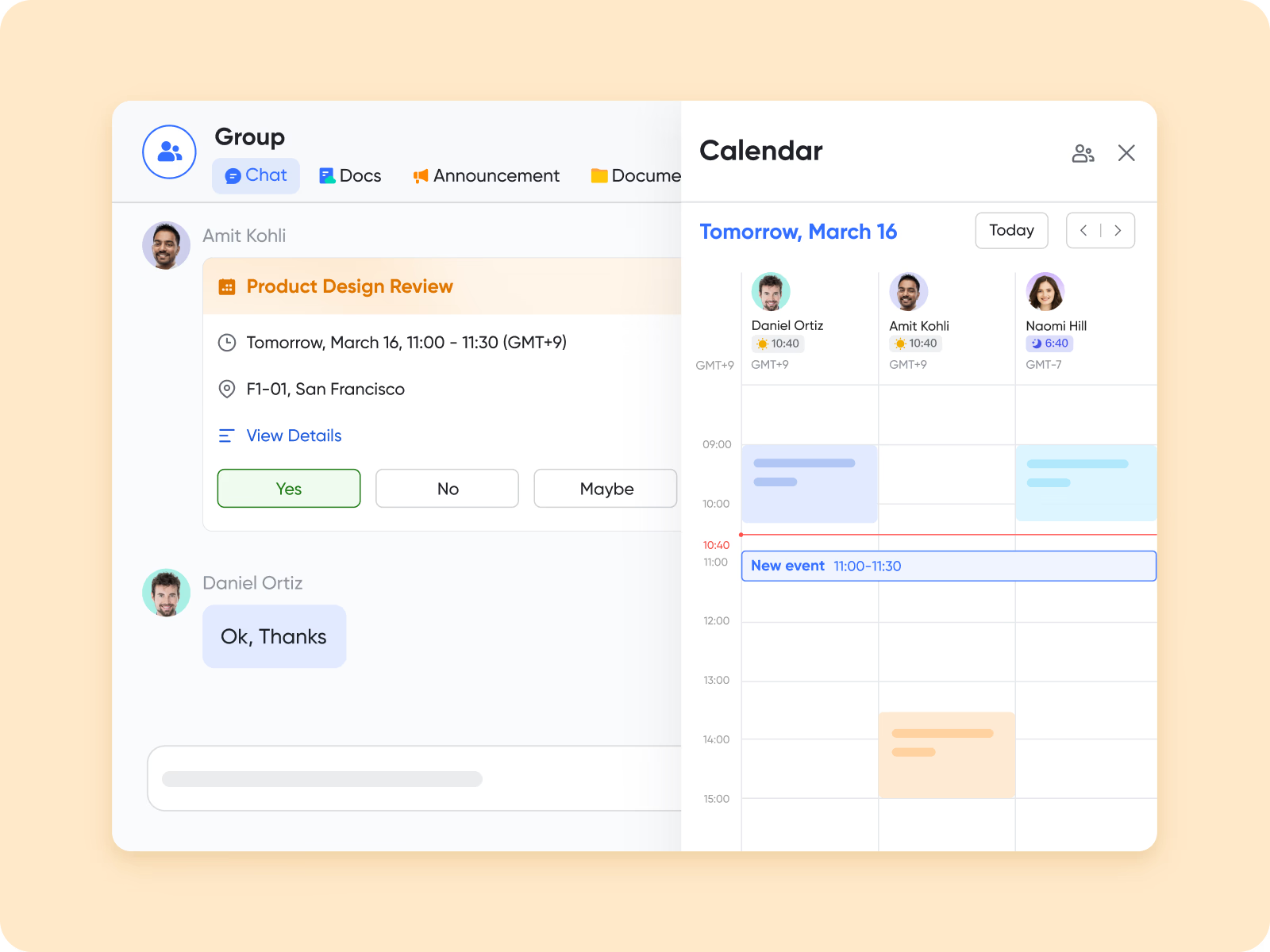
Lark Calendar
During growth phases, such as when a product is launched, there are more deadlines to meet, such as client responsibilities and quarterly reviews. These deadlines can get in the way of each other if everyone isn't on the same page. Even when businesses have a lot of goals to achieve, the Lark Calendar helps them stay on track.
Everyone in the company can see important events on shared calendars. This makes sure that the deadlines for marketing campaigns meet the releases of new products and the readiness of the business to run. Automatic time zone conversion makes it easier for organizations to grow around the world, and reminders make it less likely that people will forget their commitments. Linked events link meetings to Docs or Base data to make sure that every conversation has the right context.
Calendar makes time predictable, which helps teams get into a rhythm that they can bank on.
Lark Approval: Removing bottlenecks in decision-making
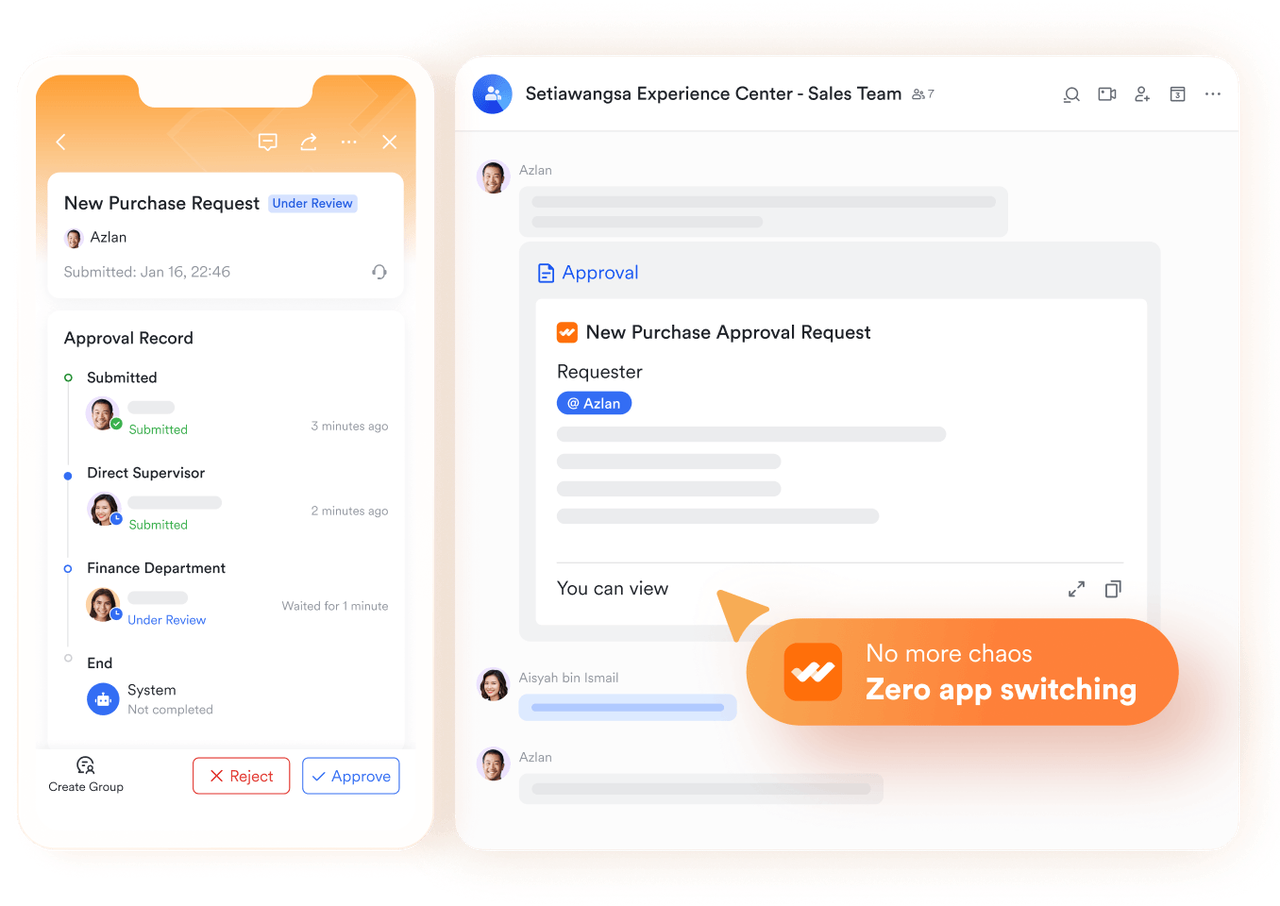
Lark Approval
As companies grow, they also need more clearances. You have to approve budgets, vendor contracts, and policy changes. If these choices become stuck in inboxes, things don't grow as fast. Lark Approval gets things moving by standardizing requests and moving them along quickly.
Standardized forms make it easier to deal with requests and are less confusing. With a clean flow attached to people icons in different positions, it shows managers what has to be done, while role-based permissions keep private information protected. Logs keep records of every choice in a way that can be checked, which makes people responsible.
An automated workflow that distributes requests right away to the correct persons also plays a role in approval. Notifications and reminders keep evaluations from getting stuck, which means that crucial business decisions may be made as soon as the organization grows.
Lark Docs: Keeping documentation live and collaborative
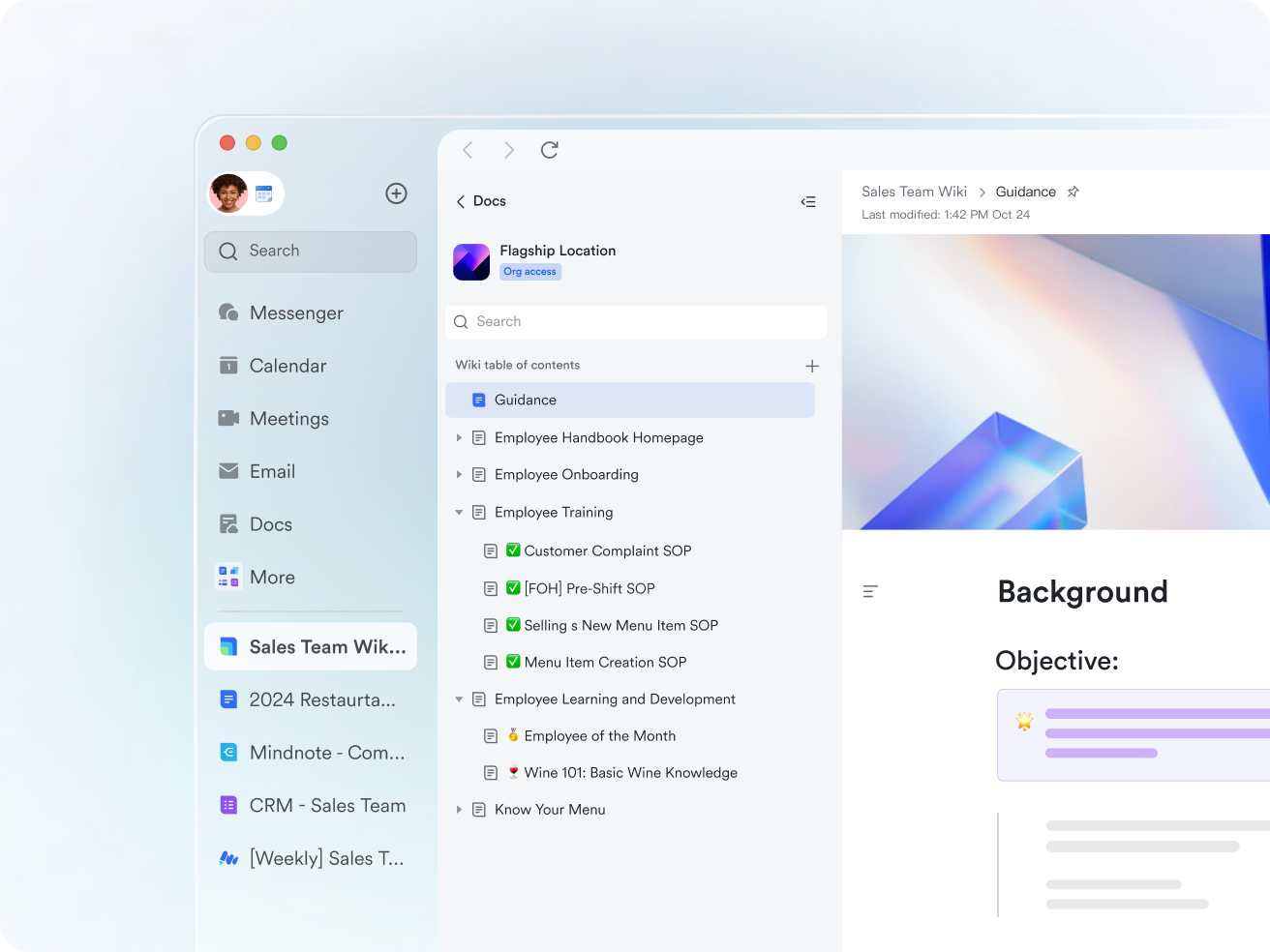
Lark Docs
Businesses need more paperwork as they grow, like strategy, proposals, and agreements with clients. If you send these as email attachments, they can get lost or jumbled up. Lark Docs solves this problem by giving everyone a place to work together in real time.
It speeds up the process when teams may work on papers at the same time. Inline comments make it easy to understand and relevant input, and version history makes sure that people are held accountable. Embedded Sheets or Base records make documents more useful by adding real-time data to them. This turns static reports into dynamic resources.
Docs makes sure that everyone is using the same version, which keeps collaboration fast, accurate, and in line with growth goals.
Lark Sheets: Turning data into immediate action
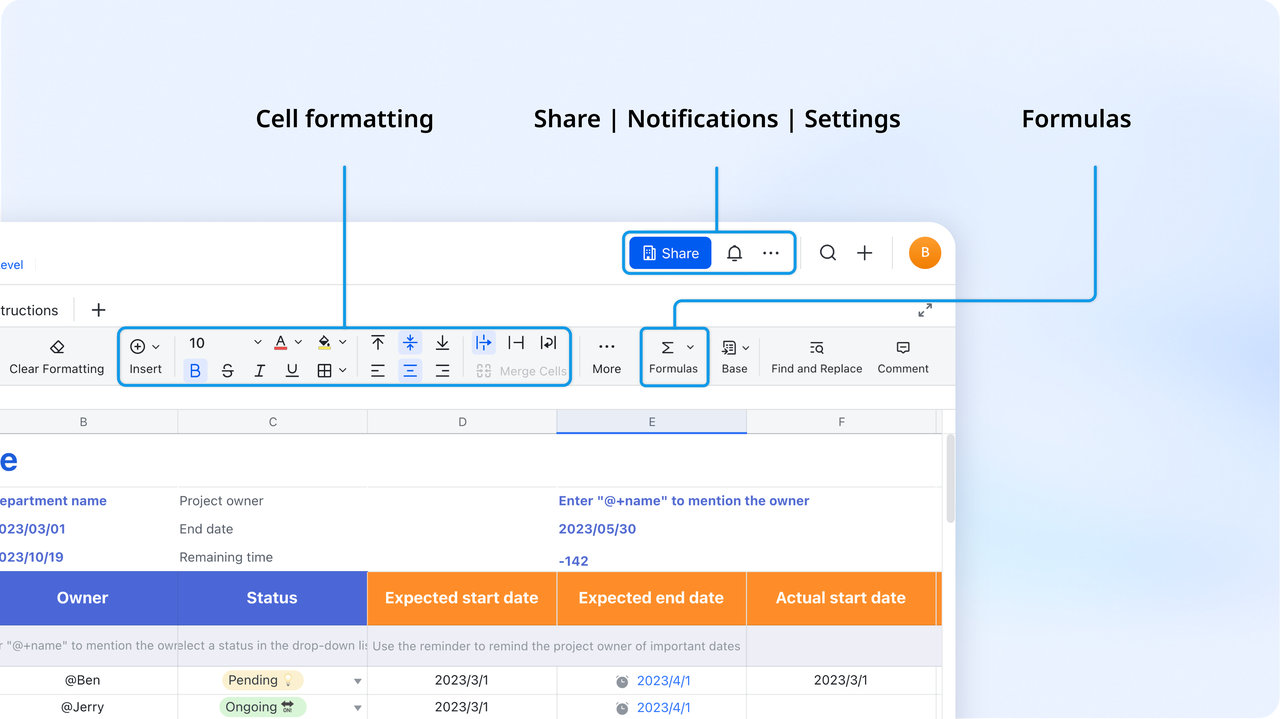
Lark Sheets
During growth phases, numbers are particularly crucial. For example, sales predictions, tracking expenses, and measuring performance are all examples of this. Making a lot of copies that need to be reconciled makes things move more slowly in traditional spreadsheets. Lark Sheets solves these difficulties by enabling individuals to work together on data management in real time.
Sales can adjust pipelines, finance can keep track of costs, and operations can maintain track of performance all on the same Sheet. Advanced formulas and pivot tables let you get solutions quickly, while audit trails make sure you are responsible. In Docs or Base, Sheets connects analysis to action immediately away, so figures aren't just reported—they're acted on right away.
Sheets keep data up to date and connected, so the most recent information is used to make decisions about growth.
Conclusion
The stages of growth depend on momentum, but it's not very strong. When businesses should be speeding up, tools that are spread out, communication that is compartmentalized, and choices that are taken too slowly could all slow down progress. Lark and other unified platforms fix this by bringing together data, communication, and action in one place.
Base structures records with CRM-like flexibility, Messenger keeps discussion crisp, Calendar aligns milestones, Approval streamlines decisions with automated procedure, Docs ensure documents expand in real time, and Sheets turn data into fast insights. These traits work together to make growth something that keeps things moving forward instead of making them more complicated.
Leaders should remember that growth doesn't always mean things will slow down. With networked technology, businesses can keep their rhythm and grow quickly while staying structured and responsive.